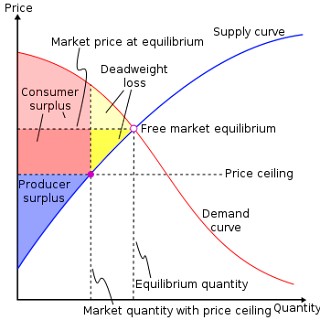NEW YORK (CNNMoney) -- There's a growing income gap in America, but it's not necessarily between the rich and the poor.
It's between the super rich and everyone else. Or as George W. Bush once quipped at a swanky campaign dinner, "the haves and the have-mores."
Income trends among 90% of Americans are relatively unchanged over the last decade. Nearly all segments of the population are moving relatively in proportion. Which is to say, they're barely moving at all.
But look at the top 10th percentile and a different story begins to emerge. The super wealthy are getting much richer, as everyone else's incomes are practically stagnant.
In 2009, the richest 10% of Americans accounted for about half the nation's wealth. Narrow that focus a bit further, and the trend is even more alarming. The top 0.1% -- those who make at least $2 million each year -- controlled 10% of the economy.
That's a far cry from the 1950s, when the suburban American dream ruled: the bottom 90% of Americans controlled about 68% of the economy.
Most research shows that a rapid rise in the top tiers of income started around the 1970s. There are various theories as to what kicked off the trend. But experts tend to agree on one thing: The continued upward trajectory for America's wealthy elite, which far outpaces that of the average American worker, was helped in large part by public policy.
"Deregulation of the financial sector seems to have created greater risk for the economy as a whole, and pushed up incomes at the top," said Jacob Hacker, Yale political science professor and co-author of the book "Winner-Take-All Politics."
Hacker argues that instead of "trickle-down economics" -- a theory that says rising wealth for those at the top eventually benefits everyone -- there's been a trickle-up effect.
The idea of deregulation gained momentum through several decades of policy put forth by lawmakers on both sides of the aisle and the Federal Reserve. As a result, the financial industry became increasingly powerful, leading to a self-reinforcing race for more profits that brought about a new era of financial innovation and extreme risk-taking.
The result was an economy controlled by the wealthy, or so-called "plutonomy," as three Citigroup analysts described in 2005.
"The world is dividing into two blocs -- the plutonomies, where economic growth is powered by and largely consumed by the wealthy few -- and the rest," the analysts wrote in a controversial research report.
But the meteoric rise of the rich took a sudden turn when the risk came crashing down in the Great Recession. At first, the wealthiest Americans appeared to be the hardest hit, with the top 1% accounting for 47% of the overall losses.
But the recession hasn't leveled the playing field, because the upper echelon was also quick to bounce back, said Ajay Kapur, the lead writer on the Citigroup report, now a managing director at Deutsche Bank.
Corporate profits returned, the public backlash against CEO pay quickly faded and and some of Wall Street's elite took home more than ever in 2010. Luxury spending did not take long to make a comeback either.
"Coming out of the recession, balance sheets of the plutonomists have recovered much more vigorously than those of other folks," Kapur wrote to CNNMoney.
Meanwhile, the real estate market has shown little signs of life since the crash, the job market has yet to fully recover and average incomes are still stagnating, keeping the American middle class far behind.
"Executives are doing well again, but the economy as a whole remains mired in unemployment and steep budget cuts at the state and local level," Hacker said.
Income inequality in America is at the highest level since the Census Bureau began tracking household income data in 1967, according to Reuters.
The disparity between the rich and the poor has reached such a high level that the United States is now in the same category as developing Third World countries such as the Ivory Coast, Jamaica and Malaysia, the report indicated.
While the number of Americans making over $50 million actually fell from 131 in 2008 to 74 last year, those at the very top of the income scale are doing better than ever, according to Tax.com.
The average wage of those making over $50 million in 2008 was $91.2 million. Last year, the average wage for those in that category jumped to $518.8 million. In 1994, there were just 25 Americans making over $20 million annually.
At the same time, the median wage for all Americans actually fell $159 to $26,261 last year. That is $37 less than the median wage for an American worker in 2000.
The end result of the growing wage gap? Last year, the richest 74 Americans, those making over $50 million annually, combined to earn as much as the 19 million lowest paid Americans combined.
During the last economic expansion, from 2002 to 2007, 65 cents of every dollar in wage gains went to the top one percent of Americans in terms of wage earners.
Some, but not all, of the growing disparity between the rich and poor can be directly attributed to the nation’s failed trade polices, according to David Kay Johnston, a former tax reporter for The New York Times.
“We have enabled ‘free trade’ that is nothing of the sort, but rather tax-subsidized mechanisms that encourage American manufacturers to close their domestic factories, fire workers, and then use cheap labor in China for products they send right back to the United States,” he writes at Tax.com. “This has created enormous downward pressure on wages, and not just for factory workers.”
The social stratification of America is a relatively new phenomenon. Prior to the free trade era, which began around the 1970s, America’s middle and lower-class workers were actually gaining ground on the nation’s rich. That, however, just like America’s manufacturing base, did not survive the era of “free trade.”
Today, top executives make, on average, 100 times more than their employees. In the 1960s, that gap was just 30 times as much. It is no coincidence then that since the 1960s, America has added roughly 46 million jobs, while shedding over two million manufacturing jobs.
Emmanuel Saez, a University of California, Berkeley, economist who was awarded a 2010 MacArthur Foundation "genius" grant for his work on income inequality told Reuters that American policy makers have a major decision to make; whether to try to even out income inequality or let society continue to grow farther apart.
"We need to decide as a society whether this increase in income inequality is efficient and acceptable and, if not, what mix of institutional reforms should be developed to counter it," he told Reuters.






















